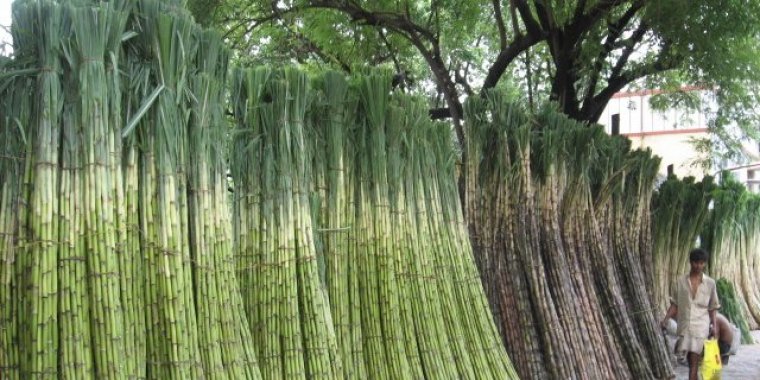| News / Science News |
Method that cuts sugarcane emissions gets global prize
A Brazilian scientist who developed a method that reduces greenhouse gas emissions from sugarcane cultivation has been awarded a prize that each year recognises a researcher whose work has excelled in the area of fertiliser use.
Heitor Cantarella received the International Fertilizer Association’s (IFA) Norman Borlaug Award on World Fertilizer Day, on 13 October — the date German chemist Fritz Haber discovered the synthesis of ammonia in 1908.
Cantarella’s work enables a 95 per cent reduction in emissions of nitrous oxide associated with cane cultivation. Sugarcane is used to produce bioethanol and therefore already contributes to a reduction in carbon dioxide emissions from the burning of fossil fuels. But it releases nitrous oxide which, pound for pound, causes a greenhouse effect approximately 300 times greater than carbon dioxide.
The fertilizers used in agriculture play a significant role in reducing the release of nitrous oxide. Cantarella created a method where urease inhibitors are used during the cultivation of cane to prevent the transformation of urea — the most used fertilizer in Brazilian agriculture — into carbon dioxide. Nitrification inhibitors are also used to block the transformation of ammonia into nitrate.
This is an important step in reducing nitrous oxide emissions, because bacteria in the soil convert nitrate to nitrous oxide and other gases. The researchers calculated a reduction rate of 85-95 per cent for soils with urea and inhibitors, compared with soil with urea or soil without fertilisers.
Brazil is the greatest sugarcane producer in the world and the main exporter of ethanol, which also powers 40 per cent of vehicles in the country.
Cane cultivation faces challenges in addition to the need for judicious use of fertilizers. One example is the burning of straw residues during harvest, which is responsible for carbon dioxide emissions and respiratory problems due to inhalation of smoke and soot.
Alternatives to the burning of these residues are being studied. (SciDev.Net)
YOU MAY ALSO LIKE





